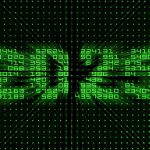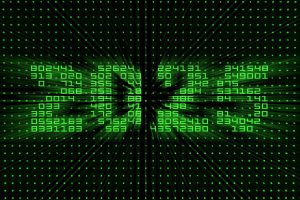March 13 () –
researchers from Caltech develop an early warning computer program to notify astronomers of neutron star mergers up to seconds or even a minute before impact.
August 17, 2017, some 70 telescopes collectively turned their gazes on a fiery collision between two dead stars that took place millions of light-years away. The telescopes observed the event at a rainbow of wavelengths, from radio waves to visible light to the highest-energy gamma rays. Colliding together, the pair of ultra-dense neutron stars spewed debris outward that glowed for days, weeks, and months.
Three other detectors were present that day to collect astronomical data.: two belonging to LIGO (Laser Interferometer Gravitational-wave Observatory) and one to the European Virgo. LIGO and Virgo do not observe light waves, but gravitational waves, or tremors in space and time produced by accelerating massive objects. When neutron stars spiral together, they generate gravitational waves before merging and exploding with light. It was the LIGO-Virgo gravitational wave network that alerted dozens of telescopes around the world that something amazing was happening in the sky.
Since then, the LIGO-Virgo network has only detected one other neutron star merger; in that case, which occurred in 2019, light-based telescopes were unable to observe the event. Now that LIGO-Virgo is scheduled to reactivate in May, astronomers are preparing to detect more explosive neutron star mergers, even before the dead stars collide.
“It’s a race against time” says Ryan Magee, a Caltech postdoctoral fellow who is co-leading the development of the early warning software with Surabhi Sachdev, a Georgia Tech professor. “We are wasting precious time to understand what happens before and just after these mergers,” it states.
Once LIGO detects a likely neutron star collision, the race is on for telescopes on the ground and in space to track it and determine its location. The LIGO-Virgo network, made up of three gravitational wave detectors, helps pinpoint the approximate location of the fireworks, while light-based telescopes are needed to identify the exact galaxy in which the neutron stars reside. .
In the case of the August 17 event, known as GW170817, most light-based telescopes couldn’t start looking for the source of the gravitational wave event until nine hours later. The LIGO-Virgo team sent its first alert to the astronomical community 40 minutes after the collision of the neutron star and the first maps of the sky, with the approximate location of the event, 4.5 hours later.
But by then, the region of interest in the southern skies had dipped below the horizon and out of sight of southern telescopes capable of seeing it. Astronomers had to wait up to nine hours after the event to start scanning the skies. Some 11 hours after the neutron star collision, several ground-based optical telescopes had finally pinpointed the source of the ripples: a galaxy called NGC 4993, located about 130 million light-years away.
With 11 hours to go before we find out how neutron stars collide with each other and seed the universe with heavy elements, astronomers eagerly await more neutron star collisions.
For the next LIGO-Virgo cycle, which will also include observations by the Japanese KAGRA observatory, the detectors have undergone a series of upgrades to better capture gravitational waves and thus neutron star mergers. The team hopes to detect between four and 10 neutron star mergers in the next cycle and up to 100 in the fifth observing cycle of the current advanced detector network, scheduled for 2027. Future observations with more advanced detectors are planned for the 2030s.
EARLY WARNING
A new feature that will be used in the next campaign is the early warning system. Specialized software will complement the main software that has been used routinely to detect all gravitational wave events to date.
The main software, also called the “search pipeline”, looks for faint gravitational wave signals hidden in the noisy LIGO data by comparing them to a library of known signals, or waveforms, that represent different types of events, such as black hole mergers. and neutron stars. If a match is found and confirmed, an alert is sent to the astronomical community. Early warning software works the same way, but it only uses truncated versions of the waveforms in order to work faster.
“The detectors are constantly collecting new data during an observation, and we compare our waveforms with the data that is coming in. If we use truncated waveforms, we don’t have to wait for as much data to be collected to make the comparison,” he explains. Magee it’s a statement.
“The tradeoff is that the signal must be strong enough to be detected with truncated waveforms. It’s important to keep running the main pipelines alongside the early warning pipeline to catch the weakest signals and get the best final locations,” he added. Magee, Sachdev and their colleagues are working on an early warning pipeline called GSTLAL; working on other lines of early warning for LIGO-Virgo.












